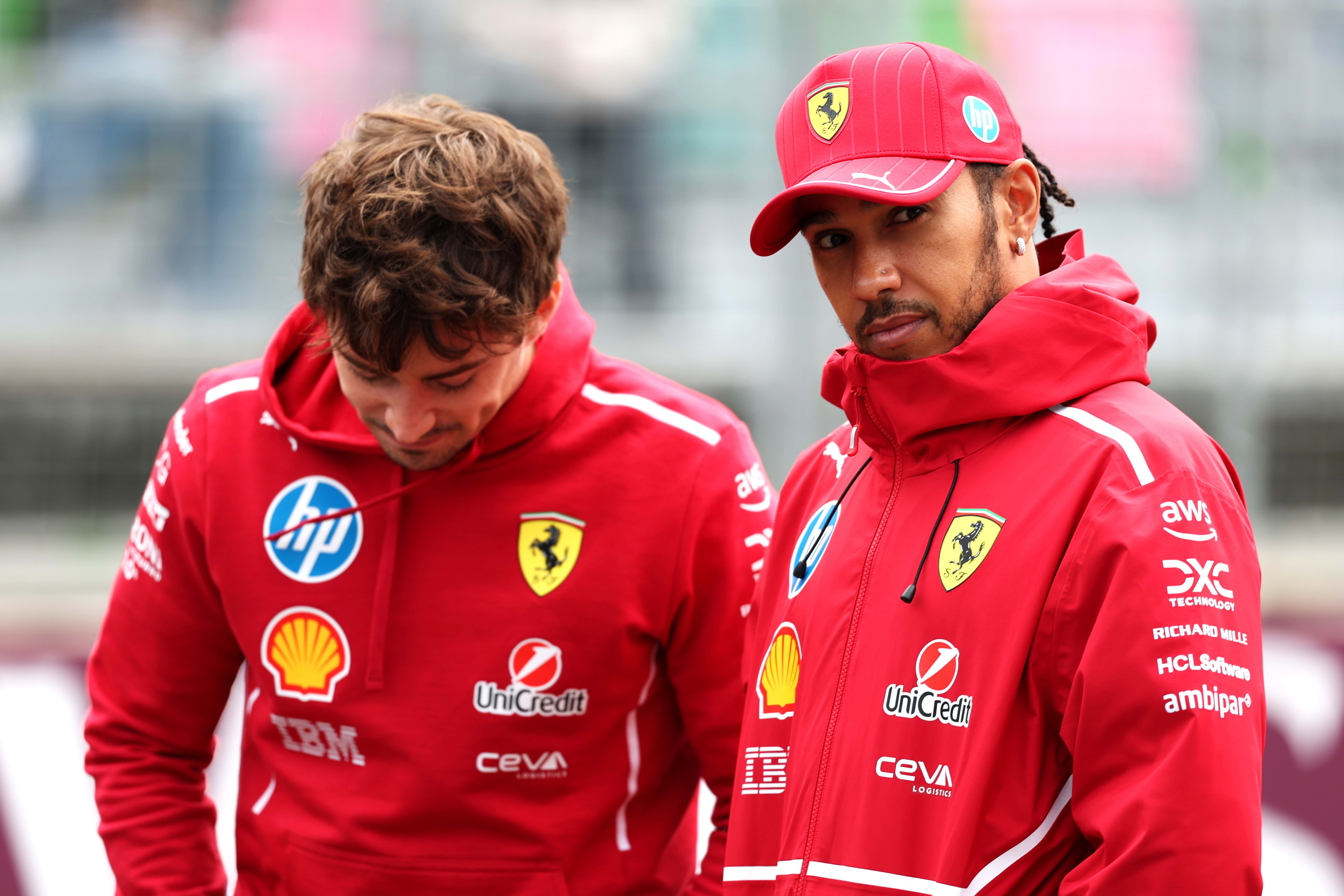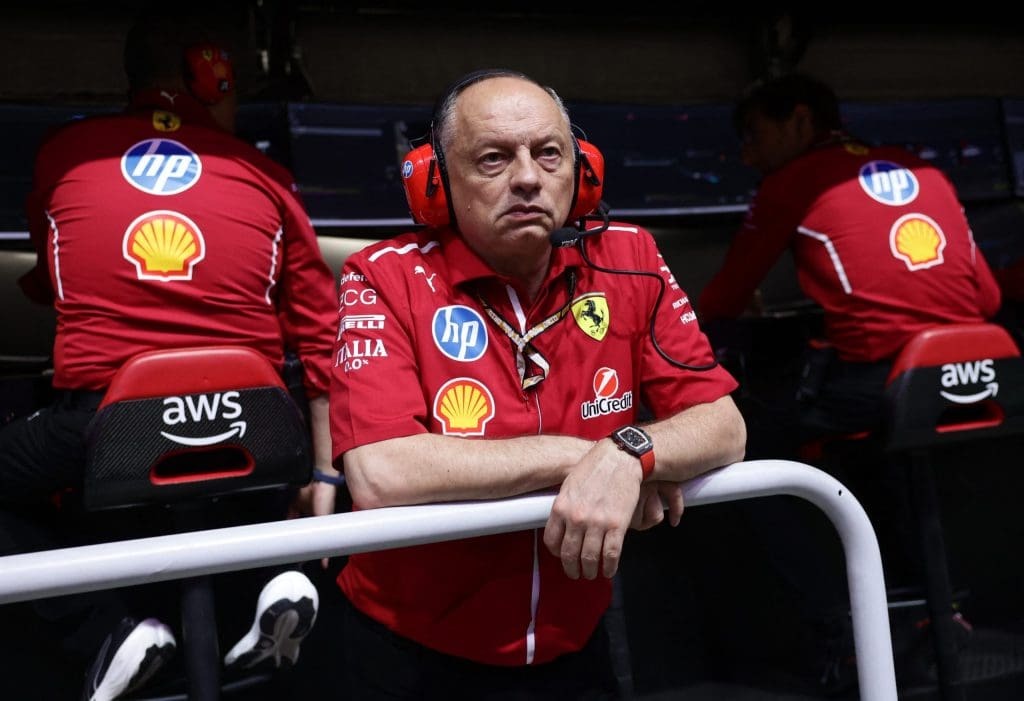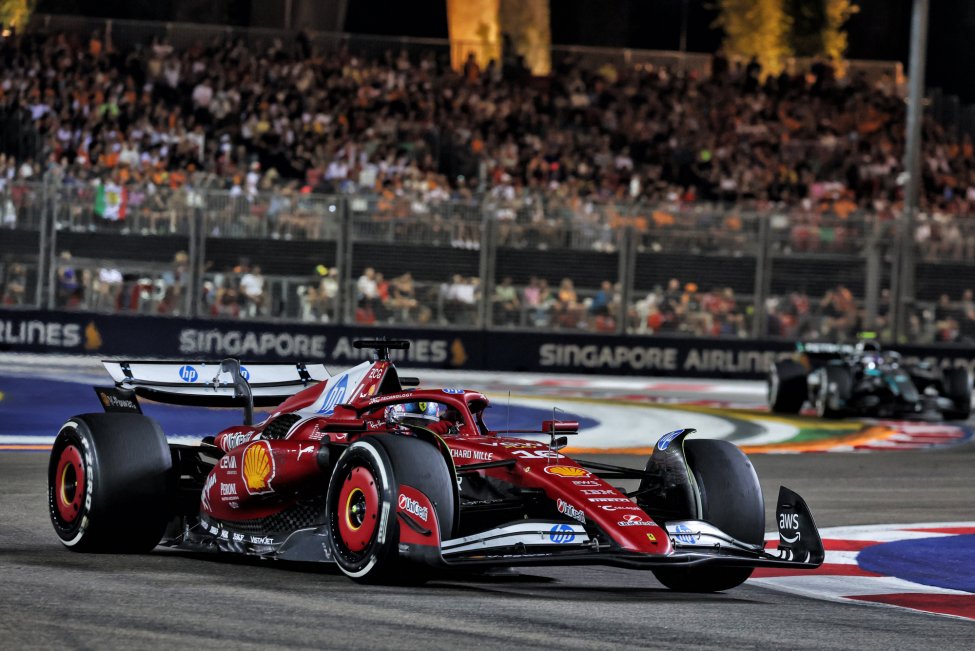The 2025 Formula 1 season was supposed to be a renaissance for Scuderia Ferrari. After nearly two decades of heartbreak, false dawns, and tantalizingly close calls, this was the year the legendary Italian team would finally reclaim its throne.
The masterstroke of signing seven-time world champion Lewis Hamilton to partner with their homegrown hero, Charles Leclerc, was hailed as the formation of the most iconic driver pairing in modern F1. The Tifosi, the passionate fans of Ferrari, dared to dream again.
But instead of a triumphant march to glory, the season has descended into a shocking and public crisis, with the team’s much-hyped SF-25 challenger turning out to be a nightmare on four wheels.

The Singapore Grand Prix, a race that was supposed to play to the strengths of the new car, became the stage for a complete and utter collapse of Ferrari’s hopes and credibility. While their rivals at Mercedes, and even the rookie sensation Kimmy Antonelli, reveled in the Marina Bay street circuit’s challenging twists and turns, Leclerc and Hamilton languished in sixth and eighth place, respectively. The result was more than just a disappointment; it was a humiliation. Whispers from within the Maranello camp suggest that the patience of not only the fans but also the star drivers is wearing perilously thin. Both Leclerc and Hamilton are said to be questioning the team’s direction and leadership, and the dream of a dominant Ferrari has been replaced by the very real possibility of a double exit.
The seeds of the Singapore disaster were sown long before the race weekend. Ferrari engineers arrived at Marina Bay with a quiet confidence, their simulations predicting a strong performance. They believed the SF-25’s mechanical grip and traction would be perfectly suited to the tight, twisting layout of the street circuit. However, this optimism quickly evaporated during Friday practice. A recurring issue with the car’s floor height forced the team to raise the ride height, a decision that completely unraveled the car’s delicate balance. From that moment on, the SF-25 was a shadow of the machine it was intended to be.
Both Leclerc and Hamilton were plagued by chronic understeer, a weak front end, and unpredictable cornering. In a desperate attempt to salvage the situation, the team introduced smaller brake ducts, but this move backfired spectacularly. The brakes began to overheat, forcing Leclerc to nurse his car for half the race, while Hamilton’s system failed entirely towards the end. He limped across the finish line, cutting corners just to survive, only to be unceremoniously slapped with a penalty. For a team with aspirations of challenging for the world championship, the humiliation could not have been greater.

The problems with the SF-25, however, are not merely superficial setup issues. They are structural, woven into the very DNA of the car. The team’s decision to switch from a push-rod to a pull-rod front suspension, in an attempt to mimic the all-conquering Red Bull, has fundamentally broken the car’s design philosophy. This change has robbed Ferrari of one of its long-standing strengths: braking stability. The new system is also notoriously difficult to fine-tune, meaning that even minor setup changes can have a catastrophic effect on the car’s handling. An engineer from within the team was reportedly quoted as saying, “This car is done. We can’t save it.”
This damning assessment speaks volumes about the state of affairs at Maranello. Multiple sources claim that Ferrari has already halted the development of the SF-25 and has shifted its entire focus to the 2026 project, a year that will see a major overhaul of the sport’s regulations. In essence, they have given up on the 2025 season. This decision, however, has created a toxic and dangerous atmosphere within the team.
Charles Leclerc, the Monegasque prodigy who has dedicated his career to the dream of bringing a championship back to Ferrari, now feels a profound sense of betrayal. His post-race comments in Singapore, where he stated, “We are drowning in our own expectations,” were more than just a reflection of his frustration; they were a warning shot to the team’s management. Behind closed doors, Leclerc’s tone was reportedly even harsher. He is pushing the team to deliver a car capable of fighting for victories, not just scraping for podiums. However, some engineers within the team are growing weary of his criticism, believing they have done everything they can with the flawed machinery they have been given. This growing rift between Leclerc and the technical department is eerily reminiscent of the breakdown in the relationship between Sebastian Vettel and the Ferrari leadership, a saga that also ended with the driver walking away.
And then there is Lewis Hamilton. Publicly, he has been the consummate professional—calm, optimistic, and diplomatic. But sources suggest that his patience is not infinite. Hamilton has been quietly working with his former Mercedes ally, Loic Serra, to reshape Ferrari’s technical feedback process. His driven, methodical approach is clashing with Ferrari’s more emotional, instinct-based decision-making culture. It is a culture clash in its purest form—the meticulous British mindset versus the passionate Italian philosophy.

Interestingly, while Leclerc has been vocal in his frustrations to the media, Hamilton has been channeling his discontent behind the scenes. Earlier in the season, after the Belgian Grand Prix, he reportedly sent a private memo to the Ferrari management, outlining every single weakness of the SF-25. The letter, according to insiders, was brutally honest. While some at Maranello appreciated the directness, others saw it as a challenge to their authority.
This dual pressure from two superstar drivers has pushed team principal Frédéric Vasseur into a corner. His public optimism about the car’s potential has become a running joke in the paddock, and the ever-critical Italian media are now portraying him as another Mattia Binotto—a capable engineer, perhaps, but a weak leader unable to unite the team. After the Singapore debacle, the influential Italian newspaper, Corriere dello Sport, reported a heated exchange between Vasseur and Matteo Togninalli, Ferrari’s head of track engineering.
For Leclerc, this is not just about results; it’s about his legacy. He has always maintained that his dream was to become a world champion with Ferrari, to follow in the footsteps of his hero, Michael Schumacher. But dreams can fade. His manager, Nicolas Todt, has already hinted that Leclerc could explore other options if Ferrari fails to deliver a competitive car under the new 2026 regulations. Informal talks with McLaren, Mercedes, and even Aston Martin have already been reported. Whether these discussions are serious or just a negotiating tactic, they are a clear sign that Leclerc’s loyalty is being tested like never before. Rumors suggest that Ferrari has already drawn up contingency plans, with Oscar Piastri being considered as a potential replacement in 2027 should Leclerc decide to walk away.
As for Hamilton, his situation is slightly different. He is in the twilight of his illustrious career but remains fiercely determined to add one final, glorious chapter in the iconic red of Ferrari. Yet, even he will not remain patient forever. If Ferrari continues to falter through 2025, his much-anticipated arrival could go down not as a renaissance but as a repeat of Fernando Alonso’s painful years with the team—full of promise but ending in disappointment.
The greatest irony in this unfolding drama is that Ferrari’s decision to look ahead to 2026 might be their undoing. In Formula 1, momentum is everything. By abandoning the 2025 season, they risk losing both their star drivers before the new era even begins. The team that once symbolized pride, passion, and power now appears fractured, confused, and leaderless. The question on everyone’s lips is no longer if, but when, the implosion will happen. And who will be the first to leave—Charles Leclerc, the disillusioned dreamer, or Lewis Hamilton, the seven-time champion running out of time? The story at Maranello is far from over, and the coming months will be crucial in determining the future of this legendary team.